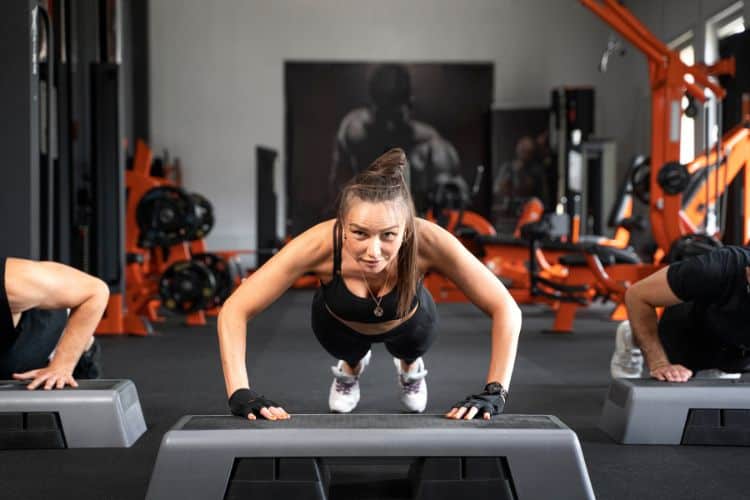Sign up for workout ideas, training advice, reviews of the latest gear and more.






If you’re short on time but still serious about building muscle, 30-minute calisthenics workouts are one of the most efficient ways to pack on strength and size without needing a gym or heavy equipment. Calisthenics, or bodyweight training, focuses on compound, functional movements that develop real-world strength and muscular definition. Whether you’re training at home, outdoors, or while traveling, these workouts help you build muscle fast using nothing but your own body.
In this guide, we’ll walk you through the benefits of muscle-building calisthenics, outline a high-intensity 30-minute routine, and explain how to progressively overload using just bodyweight. This guide is your go-to for mastering short, effective calisthenics workouts that build size and strength in half an hour.
Calisthenics involves exercises that rely solely on your bodyweight for resistance. Common moves include push-ups, pull-ups, squats, dips, planks, and lunges. But muscle-building calisthenics goes a step further—focusing on progressive overload, high-volume reps, time-under-tension, and advanced variations.
These movements engage multiple muscle groups, creating hypertrophy (muscle growth) without the need for dumbbells or barbells. They are ideal for those who want a shredded physique, functional strength, and mobility.
A well-structured 30-minute calisthenics routine can target all major muscle groups and create enough muscle stimulus for growth. Exercises like diamond push-ups, Bulgarian split squats, and explosive pull-ups provide high-intensity resistance.
You can build an impressive physique with just a pull-up bar, dip station, or resistance bands. No gym membership required—just your bodyweight and determination.
Calisthenics requires control and coordination, activating your core muscles and stabilizers more than isolated weight training. This builds strength that translates into daily movements and athletic performance.
By combining compound bodyweight exercises with minimal rest, calisthenics offers a hybrid of strength training and cardio. This means you can burn fat and gain muscle simultaneously in just 30 minutes.
To build muscle efficiently in 30 minutes, structure your workout into four key phases:
Let’s dive deeper into each segment.
Before jumping into strength moves, spend 5 minutes prepping your body:
This dynamic warm-up increases circulation, warms joints, and improves range of motion.
Perform this workout as a circuit: complete all exercises back-to-back with 30 seconds rest between movements. After one round, rest for 60–90 seconds, then repeat for 3 total rounds.
Start with standard push-ups or scale up with:
Focus on slow, controlled reps and full range of motion.
If you can’t do pull-ups yet, perform inverted rows under a sturdy table or bar. Advanced users can add:
Use a bench, chair, or stair. Slow tempo and deep depth increase muscle recruitment. Optionally hold a weighted backpack or resistance bands.
This vertical pushing movement targets the delts and mimics overhead presses. Advanced variation: elevated pike push-ups.
Lie on your back, bend knees, and raise hips by squeezing glutes. To increase intensity:
End your workout with this 3-minute core burnout—no rest between sets.
This will strengthen your abs, improve posture, and support overall athleticism.
Wrap up your session by stretching the major muscle groups. Spend 30 seconds on each:
This promotes recovery, reduces soreness, and maintains flexibility.
One challenge with bodyweight training is knowing how to keep progressing. Muscle growth relies on progressive overload—increasing difficulty to challenge your muscles. Here’s how:
If 10 push-ups feel easy, slow the tempo or do 15–20 reps. Use 3-1-1 tempo: 3 seconds down, 1 second pause, 1 second up.
Shorter rest keeps intensity high and promotes muscular endurance and hypertrophy.
Use resistance bands, weighted vests, or loaded backpacks to increase tension without sacrificing movement quality.
Log your reps, sets, and rest periods. If you’re improving weekly, you’re building strength and muscle.
Here’s how you can structure your weekly calisthenics routine to hit all major muscle groups with 30-minute sessions:
| Day | Workout Focus |
|---|---|
| Monday | Upper Body Push (Push-Ups, Pike Push-Ups) |
| Tuesday | Lower Body (Split Squats, Glutes) |
| Wednesday | Core & Cardio Conditioning |
| Thursday | Upper Body Pull (Pull-Ups, Rows) |
| Friday | Full-Body Calisthenics Circuit |
| Saturday | Active Recovery (Stretch, Walk, Yoga) |
| Sunday | Rest or Light Mobility |
This weekly plan ensures consistent muscle stimulation, recovery, and overall fitness.
New to working out? Start with simplified versions like knee push-ups, incline rows, or wall sits. Calisthenics teaches body control and builds foundational strength.
If you’re moderately fit, start progressing toward advanced moves like explosive push-ups, pistol squats, or L-sit holds.
Athletes can manipulate tempo, increase volume, add static holds (like planche, handstands, or muscle-ups) to maximize gains and challenge their limits.
With just your bodyweight and 30 minutes, you can build real muscle, boost endurance, and enhance total-body strength. Calisthenics not only sculpts your physique but also improves your mobility, coordination, and athleticism.
The key is structured programming, proper recovery, and progressive overload. Whether you’re in your living room, a hotel room, or a park, your body is your gym—and these muscle-building calisthenics workouts prove it.
So, lace up your shoes, grab a towel, and challenge yourself with a 30-minute bodyweight muscle-building session that delivers real results.
Want more effective workouts?
Subscribe to our blog or follow us on Pinterest for new routines, challenges, and fitness tips!
Stay up to date on the latest women’s health, fitness and lifestyle trends and tips.